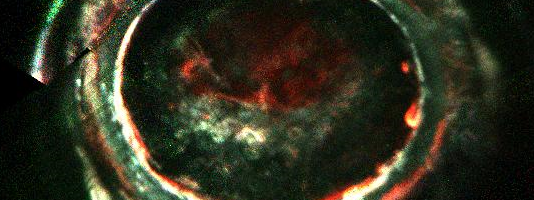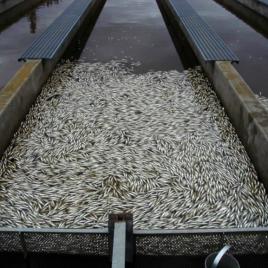
Auroral image of Jupiter’s southern aurora, used in the subject study, obtained by the Juno Ultraviolet Spectrograph (UVS) instrument on 2 February 2017. This image overlays three different UVS wavelength ranges and color codes them such that red, green, and blue indicate high, medium and low energy electrons impinging on the atmosphere, with color mixtures indicating a mixture of energies. The streak on the upper left is the auroral tail caused by Jupiter’s moon Io.
(Credit: G. Randy Gladston)
Auroral emissions—also known as Northern or Southern Lights on Earth—are very powerful on Jupiter, which is why scientists thought the process behind auroras on the biggest Solar System planet was similar to the one responsible for Earth’s brightest auroras. But recent research suggests this is not the case. On our planet, two processes are responsible for Northern and Southern Lights: intense auroras are generated by acceleration of electrons, whereas weaker auroras arise from scattering of magnetically trapped electrons. Recent observations of Jupiter’s auroras indicate that the latter process is involved, although more research is needed to figure out why scattering electrons produce a much brighter aurora on Jupiter than on Earth.
Authors:
B. H. Mauk, D. K. Haggerty, C. Paranicas, G. Clark, P. Kollmann, A. M. Rymer, S. J. Bolton, S. M. Levin, A. Adriani, F. Allegrini, F. Bagenal, B. Bonfond, J. E. P. Connerney, G. R. Gladstone, W. S. Kurth, D. J. McComas & P. Valek
Corresponding author:
Barry Mauk, The Johns Hopkins University Applied Physics Laboratory, Laurel, Maryland. Email: barry.mauk@jhuapl.edu
Original paper published in Nature on September 6, 2017.


